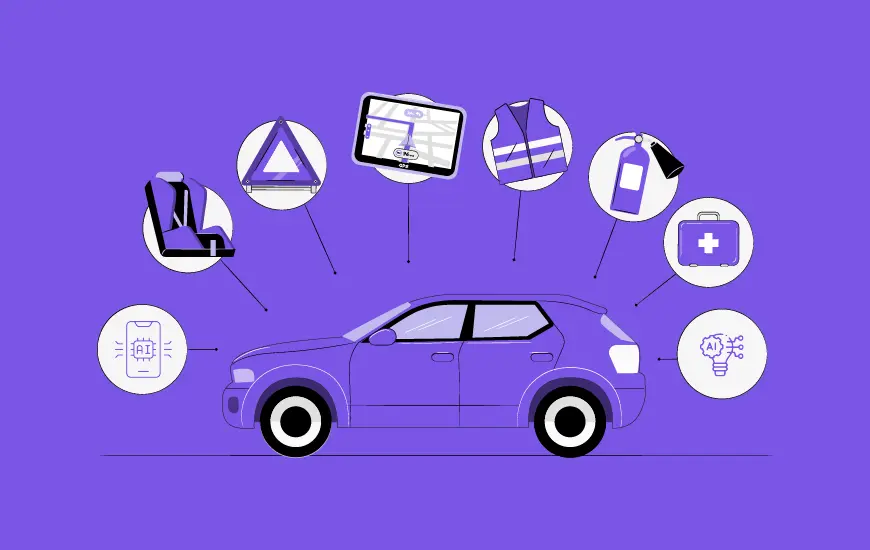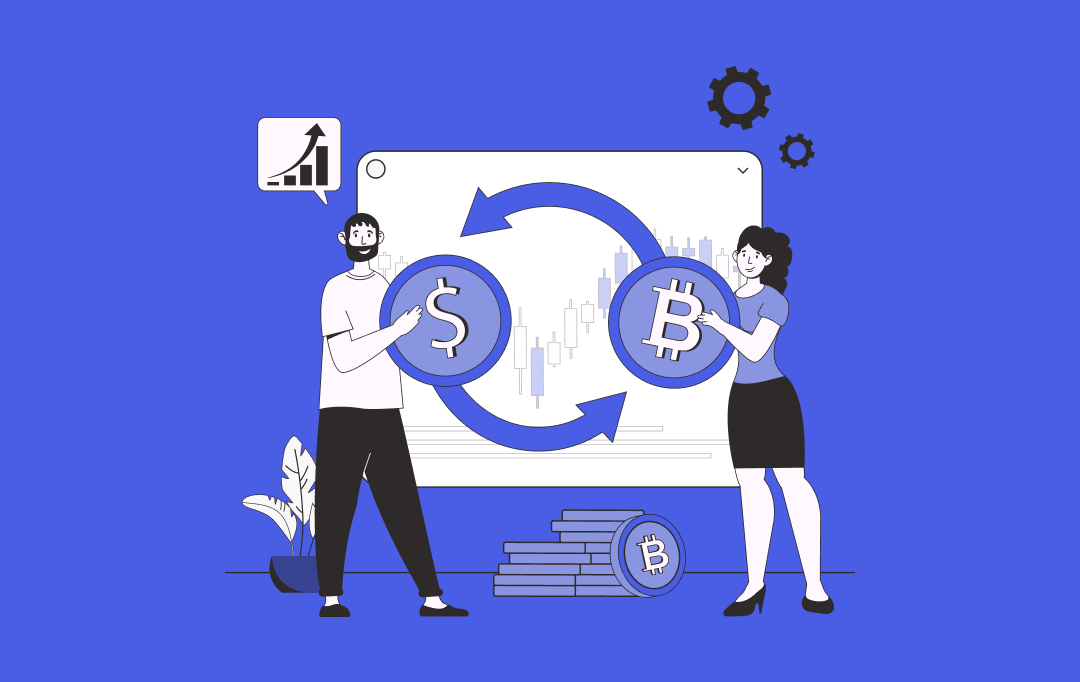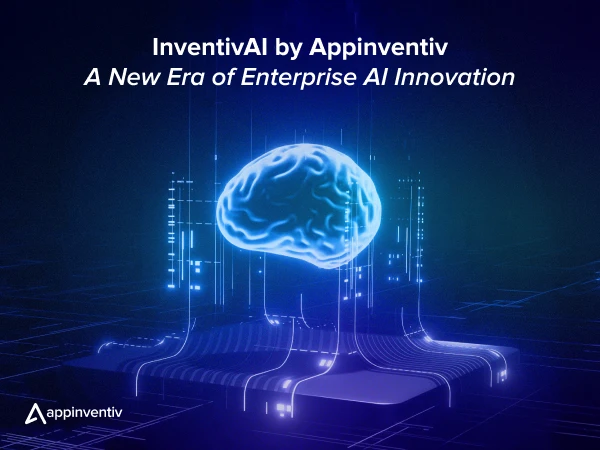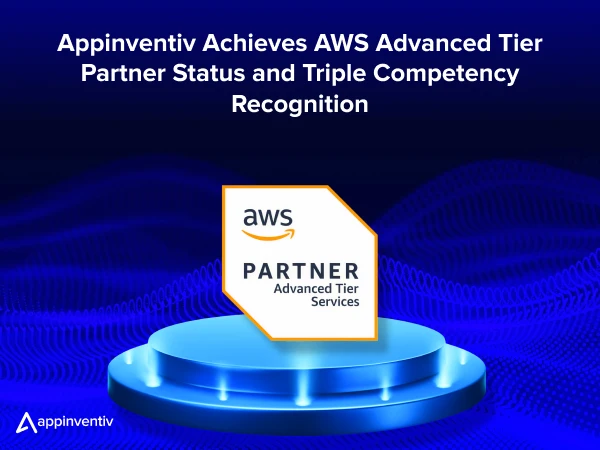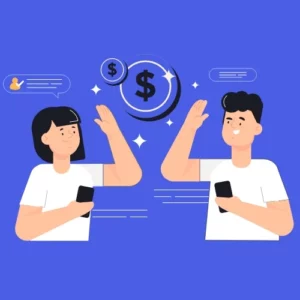- Why Understanding App Monetization Is Non-Negotiable for Modern Businesses
- Why This Matters to Your Business
- Key Considerations Before Building a Revenue-Generating App
- 1. Define the Core Purpose of the App
- 2. Know Your Audience Inside Out
- 3. Conduct Deep Competitor & Category Analysis
- 4. Choose a Scalable Tech Stack
- How do Apps Make Money: Mobile App Monetization Models for Businesses to Look Out For
- 1. In-App Advertising (IAA)
- 2. In-App Purchases (IAP)
- 3. Freemium Model
- 4. Subscription Model
- 5. Paid Apps
- 6. Affiliate & Referral-Based Models
- 7. Commission-Based / Marketplace Model
- 8. White-Labeling or Licensing Model
- 9. Data Monetization Model
- 10. Crowdfunding / Donation Model
- 11. Sponsorship or Brand Partnership Model
- 12. Merchandise & eCommerce Model
- 13. Social Gifting & Tipping Model
- 14. Licensing IP or Content Model
- How to Choose the Right App Monetization Strategy for Your Business
- Design a Monetization Funnel Aligned with Your Core Value Proposition
- Match Platform Strategy with Monetization Potential
- Leverage Expandability Through Native Feature Extensions
- Localize Pricing and Monetization Models
- Treat Monetization Like a Living Experiment: Back It with Data
- Paid Apps vs Free Apps vs Subscription Model: What is the Right Choice?
- Understanding Monetization by App Category
- Games
- Health & Wellness Apps
- Education & Learning Platforms
- Productivity Tools
- Entertainment & Media
- E-commerce & Marketplaces
- Finance & Fintech
- Social & Creator Platforms
- Utility Apps
- Nonprofits & Community-Driven Apps
- Live Streaming & Interactive Content Apps
- Enterprise & B2B Apps
- How to Maximize App Revenue Without Compromising User Experience: Implementation Tips and Best Practices
- Integrate Monetization Without Hurting UX
- Choose the Right Monetization Partners
- Leverage Real-Time Analytics
- Optimize for Retention First
- Be Transparent and Ethical
- Emerging Monetization Trends That Will Dominate the Future
- AI-Driven Personalization of Monetization Flows
- Hybrid Monetization Models
- Microtransactions and Granular Pricing
- Embedded Financial Services (Fintech Layering)
- Subscription Unbundling
- Monetization Through Ecosystem Partnerships
- Privacy-First Monetization
- AI-Powered App Monetization: Turning Intelligence into Revenue
- How Can Appinventiv Help You With Mobile App Development?
- FAQs
Key takeaways:
- Monetization should be part of app design from day one.
- User behavior determines the right revenue model.
- AI helps personalize and optimize monetization.
- Hybrid models boost both reach and revenue.
- Real-time data drives smarter revenue decisions.
- Compliance ensures safe, scalable monetization.
For enterprises and startups, a mobile app is no longer just a digital touchpoint—it’s a scalable revenue engine, a data goldmine, and a strategic asset that can influence business outcomes far beyond user engagement.
The real question isn’t just “How do apps make money?”—it’s how to make money from an app in a way that fuels sustained profitability and creates long-term operational leverage. From fintech platforms optimizing conversion funnels to media apps driving recurring subscription revenue, forward-looking businesses treat app monetization as a core product strategy—not a secondary revenue stream.
At its foundation, effective mobile app monetization strategies hinge on aligning user value with scalable revenue capture. Whether through in-app advertising, subscription models, freemium offerings, or strategic partnerships, choosing the right app revenue model—and refining it through real-time usage data and audience segmentation—is critical to maximizing app development ROI.
In this blog, we explore how today’s most successful apps make money, which models deliver the strongest returns, and how to engineer monetization into your product roadmap from day one. Whether you’re building an enterprise SaaS, a consumer utility, or a niche marketplace, this guide will help you design monetization that’s not bolted on—but built in.
We help businesses turn product ideas into revenue engines—with the right tech and strategy.
Why Understanding App Monetization Is Non-Negotiable for Modern Businesses
For most companies, building an app is no longer about presence—it’s about performance. And that performance is increasingly judged by one metric: revenue.
According to Statista, global revenue from the app market is projected to surge by $151.1 billion between 2024 and 2027, reaching an all-time high of $673.78 billion. That’s nearly a 29% growth in just three years—growth that stems not from downloads, but from well-engineered products built on solid mobile app monetization strategies.
A major driver of this growth is in-app advertising, forecasted to reach $390.04 billion by 2025, and exceed $533.92 billion by 2029. Meanwhile, subscription-based app revenue models are seeing a parallel boom. Between 2021 and 2025, digital content and media subscriptions are expected to generate $1.26 trillion globally.
Enterprise apps are also evolving fast. According to IDC, revenues from enterprise applications are set to cross $600 billion by 2028, driven by deeper integration of AI, machine learning, and GenAI. These technologies aren’t just enhancing workflows—they’re unlocking new revenue layers through smarter personalization and real-time engagement.
Why This Matters to Your Business
- If your app isn’t making money, it’s not scaling your business. Whether through in-app ads, subscriptions, or freemium upgrades, knowing how to make money from an app is essential for long-term viability.
- Revenue needs to be designed, not assumed. The best-performing products are built with monetization-first thinking—leveraging the right mobile app business model, data, and app monetization platforms to turn users into paying customers.
- AI is transforming monetization itself. From dynamic pricing to predictive churn management, AI-powered app monetization is becoming the new edge for enterprises looking to maximize app development ROI.
With nearly $674 billion in app revenue projected by 2027, the opportunity isn’t just growing—it’s accelerating. Now is the time to reimagine your app as a revenue engine, not just a product.
Key Considerations Before Building a Revenue-Generating App
Before diving into development and understanding how do apps make money, enterprises must go beyond basic ideation and take a strategic pause. Building a scalable product means ensuring monetization isn’t an afterthought—it’s part of the design from day zero. The real edge lies in engineering the right monetization fit based on app purpose, audience behavior, market competition, and tech stack.
Whether you’re working with an internal product team or a mobile app development partner, here are four essential pillars to guide your app monetization strategy:
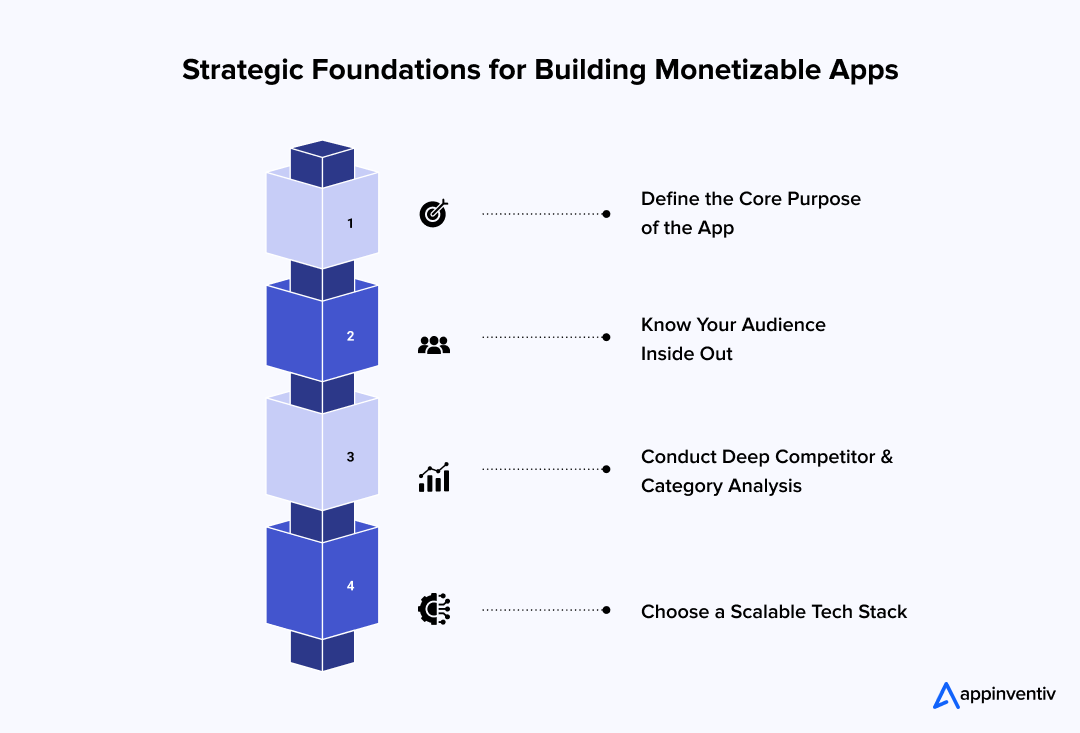
1. Define the Core Purpose of the App
Understanding how to make money on apps starts with knowing why you’re building it. What user problem does your app solve? How mission-critical is that problem? And how often will users return?
If your app serves as a content hub or utility platform (e.g., media, fitness, productivity), subscription-based models may be ideal. If it’s transactional (e.g., marketplaces or e-commerce), commission or freemium tiers might suit better. Without a clear problem-solution narrative, you risk selecting the wrong mobile app business model—one that may fail to scale.
2. Know Your Audience Inside Out
How do mobile apps make money? By delivering value that users are willing to pay for.
To choose the right app revenue model, you must understand:
- Who your users are
- What they value
- How much they’re willing to pay
- How frequently they engage
For instance, B2B users may prefer feature-based pricing, while consumer users might respond better to ad-supported freemium. Your app monetization strategy must reflect not just user needs, but user behavior at scale.
3. Conduct Deep Competitor & Category Analysis
You’re not just figuring out how an app makes money—you’re figuring out how your app will make more.
Study competitors within your category to analyze:
- Which app monetization platforms and models they’re using
- What their user retention and pricing structures look like
- Where their models break down (hint: opportunity for disruption)
This insight will help you fine-tune your value proposition, pricing logic, and even marketing roadmap—turning competitive pressure into strategic clarity.
4. Choose a Scalable Tech Stack
Technology isn’t just about performance—it directly influences profitability. The frameworks, tools, and backend services you choose will define the cost-to-serve, flexibility to scale, and potential to embed advanced revenue features like:
- In-app advertising SDKs
- AI-powered monetization engines
- Blockchain-based payment models (which, in some cases, offer up to 85% profit share compared to traditional 70% models)
Your tech choices can either restrict or amplify your ability to make money from an app—especially if you plan to scale across markets or verticals.
With these foundational elements in place, let’s move into the monetization models that dominate today’s app economy—and how to evaluate which one fits your product best.
How do Apps Make Money: Mobile App Monetization Models for Businesses to Look Out For
Once your product vision is clear, the next step is defining how your app will generate revenue. The mobile app landscape is packed with opportunities—but only when the right app revenue model is mapped to your audience, usage frequency, and business goals.
Here’s a detailed breakdown of the most effective mobile app monetization strategies for modern businesses.
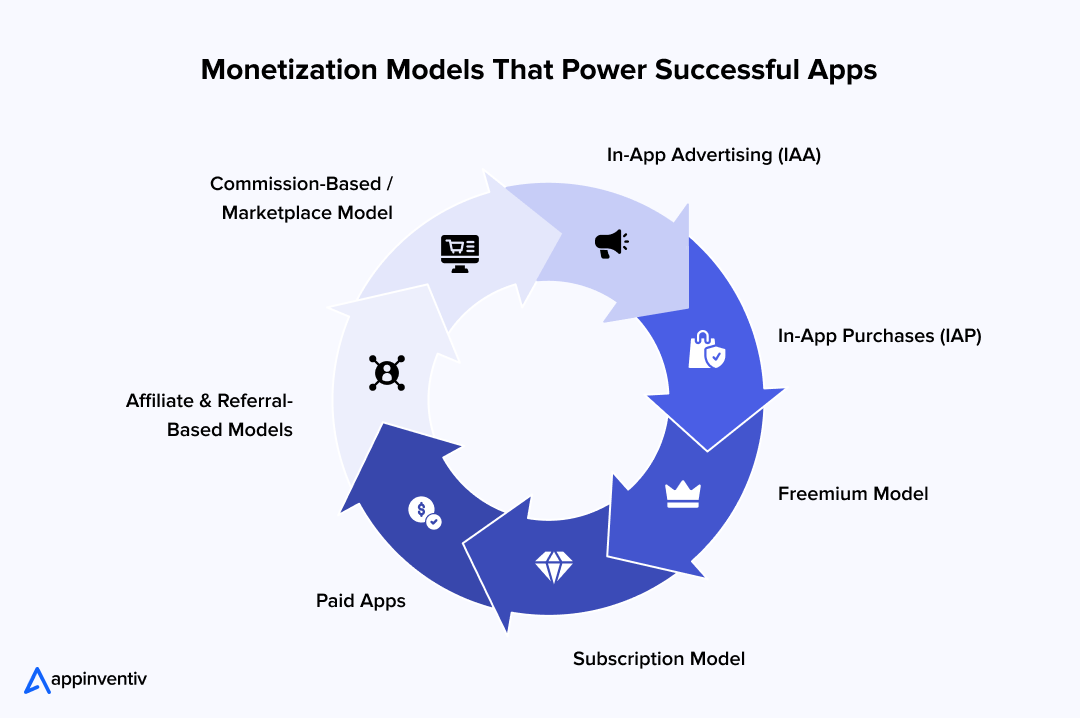
1. In-App Advertising (IAA)
One of the most common ways mobile apps make money is by displaying ads within the app interface. With ad formats ranging from banners and interstitials to rewarded videos and native placements, this model works best for apps with large active user bases.
Ideal For: News, gaming, free utility, entertainment, and social apps.
Revenue Logic: The more engaged users are, the more impressions you serve—and the more in-app advertising revenue you generate.
Pros:
- Works well with free apps
- Scales with user base
- Easy integration with app monetization platforms (e.g., Google AdMob, Meta Audience Network)
Cons:
- Can hurt UX if overused
- Highly dependent on user volume and session time
2. In-App Purchases (IAP)
This model lets users buy virtual goods, content, or upgrades directly inside the app. It’s especially popular in gaming and fitness apps but also works in content platforms and learning apps.
Ideal For: Games, fitness, educational, and freemium tools.
Revenue Logic: Offering “free basic access” and unlocking premium features/content behind microtransactions.
Pros:
- Boosts lifetime value (LTV) of users
- Flexible pricing tiers
- Can co-exist with ads or subscriptions
Cons:
- Requires deep user engagement
- Difficult to predict spending behavior without analytics
3. Freemium Model
Under this mobile app business model, the core features are free, but advanced features, content, or tools are gated behind a paywall. The goal is to convert a percentage of free users into paying subscribers or IAP buyers. Even if you have understood the context of how does an app make money, success with freemium hinges on offering just enough value for free—while making the upgrade feel irresistible.
Ideal For: Productivity apps, design tools, learning platforms.
Revenue Logic: Offer value upfront, create stickiness, then upsell based on usage and need.
Pros:
- High acquisition (free apps drive downloads)
- Strong funnel for conversion tracking
Cons:
- Heavy focus on UX and retention
- Monetization depends on upsell success
4. Subscription Model
Used by some of the highest-earning apps globally (e.g., Spotify, Duolingo, Calm), this model charges users on a recurring basis (monthly/annually) for ongoing access to premium features or content.
Ideal For: SaaS, streaming, wellness, productivity, and content delivery apps.
Revenue Logic: Predictable revenue via recurring billing.
Pros:
- Strong unit economics (predictable ARR/MRR)
- High customer lifetime value (LTV)
Cons:
- Needs a compelling value proposition
- Churn can offset gains if not managed with data
5. Paid Apps
This classic model charges a one-time fee upfront to download the app. While it’s now less common due to free app dominance, it can work for niche, high-value tools.
Ideal For: Specialized utilities, pro tools, niche productivity apps.
Revenue Logic: Upfront purchase from app store.
Pros:
- Immediate revenue
- No ads or IAP complexity
Cons:
- Harder user acquisition barrier
- No recurring income
6. Affiliate & Referral-Based Models
In this model, you earn commission by promoting third-party products or services inside your app. Think of it as a performance-based monetization tactic.
Ideal For: Niche blogs, reviews, travel, and deal apps.
Revenue Logic: Earn a share per lead, click, or sale driven via your app.
Pros:
- Low cost to implement
- Easy to combine with other models
Cons:
- Limited control over conversion
- Depends heavily on partner platforms
7. Commission-Based / Marketplace Model
If your app facilitates transactions between two parties (like a marketplace), you can charge a commission on each transaction.
Ideal For: Food delivery, e-commerce, freelancing, rental platforms.
Revenue Logic: Take a % cut per completed transaction.
Pros:
- Revenue scales with volume
- Value grows with network size
Cons:
- Requires robust payment and dispute systems
- High operational complexity
8. White-Labeling or Licensing Model
If your app solves a common business need, you can license the software or offer white-labeled versions to other companies. It’s a scalable B2B model that works well for platforms like delivery, fitness, or edtech.
Ideal For: B2B apps, fitness tracking, e-learning, and delivery logistics
Revenue Logic: Charge other brands for using your app architecture under their own branding
Pros:
- High-margin recurring revenue
- Scales well in niche industries
Cons:
- Requires strong documentation and support
- May need feature customization per client
9. Data Monetization Model
Apps with significant user engagement and behavioral data can monetize through anonymized data aggregation and insights (ethically and in compliance with privacy laws).
Ideal For: Fintech, retail, fitness, research-based apps
Revenue Logic: Aggregate anonymized data to sell insights or trends to third parties
Pros:
- No impact on UX
- Recurring B2B income potential
Cons:
- Strict compliance and user consent needed
- Sensitive reputational risks
10. Crowdfunding / Donation Model
Apps that solve social problems, serve communities, or offer niche but high-impact content (like indie games or public interest platforms) can monetize through donations or crowdfunding platforms.
Ideal For: Nonprofits, indie games, communities, journaling apps
Revenue Logic: Users voluntarily contribute to support app sustainability
Pros:
- Builds loyal user base
- Transparent, community-driven funding
Cons:
- Unpredictable revenue
- Depends on user sentiment
11. Sponsorship or Brand Partnership Model
Partnering with brands to showcase their logo, message, or features inside your app in a native, non-intrusive way. Works well when your user base aligns with a specific niche or lifestyle.
Ideal For: Health, wellness, parenting, lifestyle, productivity
Revenue Logic: Charge brands to sponsor app sections, challenges, events, or co-branded features
Pros:
- High-margin revenue with minimal disruption to UX
- Brand credibility can enhance user trust
Cons:
- Requires proven user engagement metrics
- Difficult to scale without audience segmentation
12. Merchandise & eCommerce Model
Apps with loyal fan bases or strong brand identity can sell physical merchandise or curated products directly through the app.
Ideal For: Gaming, entertainment, influencers, kids learning apps
Revenue Logic: Drive in-app purchases for tangible goods or dropshipping products
Pros:
- Tangible revenue diversification
- Enhances brand visibility offline
Cons:
- Needs inventory, logistics, or fulfillment partner
- Lower margins if not scaled
13. Social Gifting & Tipping Model
Allow users to tip creators or gift virtual items during live streams, performances, or content sessions. Popular in creator-led platforms.
Ideal For: Live streaming, podcast, journaling, wellness, creators
Revenue Logic: Monetize through virtual coins or gifting features users buy to appreciate others
Pros:
- Encourages user participation
- Doesn’t require hard selling
Cons:
- Needs real-time engagement
- Revenue depends on creator presence
14. Licensing IP or Content Model
If your app involves original characters, educational content, designs, or courses—you can license your content or IP to other apps, platforms, or products.
Ideal For: Edtech, kids learning, entertainment, SaaS tools
Revenue Logic: Sell access rights or IP licensing agreements to third parties
Pros:
- Zero customer acquisition cost
- Passive B2B revenue stream
Cons:
- IP protection challenges
- Requires market demand validation
Comparing App Monetization Models: A Strategic Overview of How Do Apps Make Money
| Monetization Model | Revenue Source | Ideal For | Pros | Cons |
|---|---|---|---|---|
| In-App Advertising | Impressions, clicks, views | Free apps with high DAUs | Easy to implement, scalable with usage | Affects UX, low margins per user |
| In-App Purchases (IAP) | Virtual goods/content | Games, learning, freemium tools | Strong LTV, customizable offers | Needs deep engagement, high churn risk |
| Freemium | Premium feature upgrades | Tools, content, B2C apps | Good acquisition funnel, upsell potential | Requires sharp pricing and onboarding UX |
| Subscription | Recurring billing | SaaS, content, productivity apps | Predictable revenue, high retention | Churn risk, ongoing value delivery required |
| Paid App | One-time download fee | Niche, high-value utility apps | Simple to monetize, no complex logic | High acquisition barrier, no recurring revenue |
| Affiliate / Referral | Partner commissions | Content, comparison, finance apps | Easy to integrate, passive income potential | Dependent on partner quality and tracking |
| Commission-Based Marketplace | % of user transactions | E-commerce, delivery, service apps | Scales with volume, monetizes every transaction | Complex to build, needs trust & security |
| White-Labeling / Licensing | Brand licensing fees | B2B, fitness, e-learning, delivery logistics | High-margin recurring revenue | Requires documentation, customization |
| Data Monetization | Anonymized insights | Fintech, retail, fitness, research apps | No impact on UX, recurring B2B income | Compliance & consent challenges |
| Crowdfunding / Donations | Voluntary user contributions | Nonprofits, indie games, journaling apps | Builds loyalty, community-driven | Unpredictable revenue, sentiment-dependent |
| Sponsorship / Brand Partnership | Paid app placements or features | Wellness, parenting, lifestyle apps | High-margin, brand trust | Requires proven metrics, hard to scale |
| Merchandise & eCommerce | Physical goods sales | Gaming, influencers, kids apps | Diversifies revenue, offline visibility | Needs logistics/fulfillment |
| Social Gifting / Tipping | Virtual coins/items | Creators, journaling, live content apps | Boosts user interaction, no hard sell | Depends on creator presence, live engagement |
| Licensing IP / Content | Content/IP agreements | Edtech, SaaS, learning platforms | Zero CAC, passive revenue | Requires IP protection, external demand |
How to Choose the Right App Monetization Strategy for Your Business
Understanding how do apps make money and selecting the right app monetization model isn’t about picking a revenue stream—it’s about aligning your business objectives with user behavior, market maturity, pricing tolerance, and your app’s lifecycle. With rising user acquisition costs and increasing expectations from investors, enterprises must treat monetization as a design decision, not a bolt-on feature.
Here’s a strategic framework to help you make informed, data-backed decisions on how to make money from an app—without compromising user experience or long-term scalability.
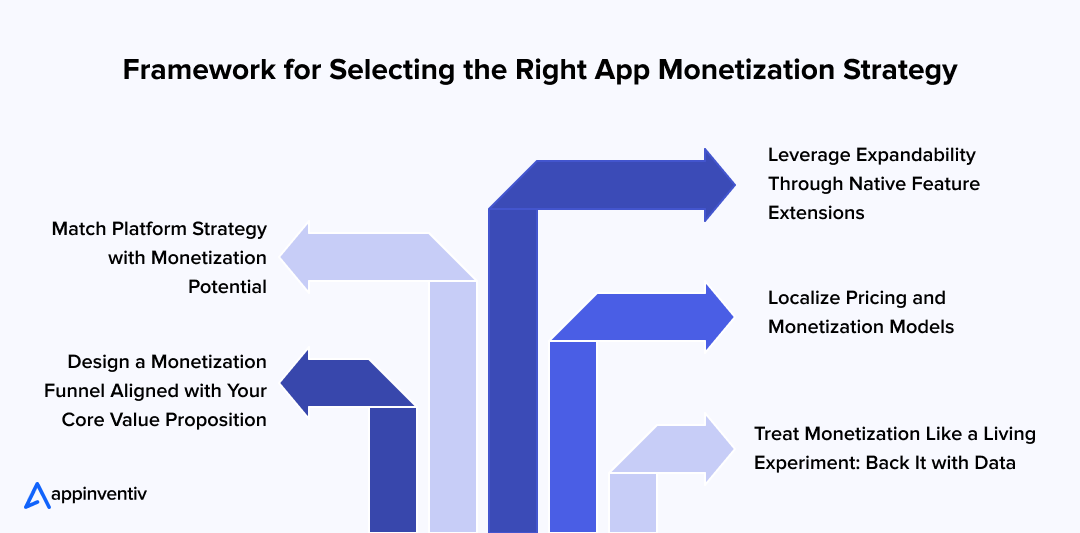
Design a Monetization Funnel Aligned with Your Core Value Proposition
Before asking how do apps make money, you must ask: what value are we delivering—and when does the user see it?
Successful apps engineer monetization around the value delivery curve. For example, in a wellness app, offering meditation tracks for free, followed by gated access to personalized routines, creates a funnel that respects the user’s journey. Similarly, B2B SaaS platforms often provide free trials or limited-feature access to drive upgrade intent.
Best Practice: Craft progressive engagement layers—starting with free access or basic functionality, followed by upsells tied to real usage or outcomes. Use behavioral analytics to track drop-off points and fine-tune the path to revenue.
Match Platform Strategy with Monetization Potential
Your mobile app business model must consider the revenue behavior of platform-specific audiences. iOS users generally have higher in-app purchase and subscription conversion rates, while Android dominates in markets with ad-friendly volume.
While cross-platform development is often essential, blindly mirroring monetization across platforms may reduce your app development ROI. For example, in-app advertising revenue models may work better on Android-heavy markets with high DAU, while subscriptions tend to convert better on iOS.
Recommendation: Use market-specific performance benchmarks and user demographics to determine which app monetization platforms and formats to prioritize per OS.
Leverage Expandability Through Native Feature Extensions
Enterprise apps—especially in sectors like gaming, education, and wellness—can drive recurring revenue by planning extensibility upfront. Structuring your roadmap around feature layering (e.g., new game levels, advanced content modules, enterprise dashboards) creates natural upsell opportunities via in-app purchase monetization or tiered subscriptions.
Example: A language learning app can start with daily quizzes and basic grammar. As user engagement deepens, you unlock AI-driven pronunciation modules or live tutor sessions as paid add-ons.
Localize Pricing and Monetization Models
A single pricing strategy across markets can quietly kill growth.
To truly scale your app revenue model, you need to factor in:
- Local pricing psychology
- Competing app pricing
- Disposable income patterns
- Platform fees in that geography
For instance, a $9.99/month subscription may thrive in the U.S. but underperform in Southeast Asia. Smart mobile app monetization strategies use regional price tiers, localized bundles, and payment integration flexibility to adapt to market conditions.
Treat Monetization Like a Living Experiment: Back It with Data
No monetization model is perfect out of the gate. The best performing apps treat monetization as a continuous optimization loop.
Use data to track:
- ARPU (Average Revenue Per User)
- Conversion rates by cohort
- CAC vs. LTV ratios
- Retention rates by monetization touchpoint
Also consider segmentation—what makes money from an app for one user group might deter another. For example, a Gen Z cohort might tolerate ads better than older professionals who prefer subscriptions.
Pro Tip: Use tools like Mixpanel, Amplitude, or Firebase to integrate real-time revenue analytics into your product dashboards.
Paid Apps vs Free Apps vs Subscription Model: What is the Right Choice?
Understanding the distinct characteristics of paid apps, free apps, and subscription models can help you select the most suitable approach based on your specific goals and user base. Let’s look into what you should choose when deciding on a monetization strategy for your app.
| Feature | Paid Apps | Free Apps | Subscription Model |
|---|---|---|---|
| Initial Cost | Users pay upfront to download the app. | Free to download. | Free or nominal cost to download, often with a free trial period. |
| Revenue Source | One-time payment by the user. | Ads, in-app purchases, or both. | Recurring payments for continued access or premium features. |
| User Acquisition | More challenging as it relies on perceived value and quality. | Easier due to no initial cost barrier. | Moderate because incentives like free trials can attract users. |
| Revenue Consistency | Less consistent and only from new downloads. | High potential with effective ad placements and compelling in-app purchases. | More consistent and predictable with a steady subscriber base. |
| Market Appeal | May appeal to niche markets seeking specific functionalities without ads. | Wide appeal and accessible to a larger audience. | Targets users preferring uninterrupted services and exclusive content. |
| User Commitment | Requires higher initial commitment due to upfront payment. | Lower initial commitment; users can freely explore before spending. | Requires ongoing commitment, encouraging deeper engagement. |
| Long-term Profitability | Dependent on continual new user acquisition. | Potentially very high if retention and engagement strategies are effective. | High, provided subscription renewals remain strong and churn rates are minimized. |
| Customer Lifetime Value | Potentially lower unless updates or expansions are offered. | Can be maximized through strategic marketing of in-app purchases and upgrades. | Typically higher due to ongoing relationships and regular updates. |
| Flexibility in Pricing | Changes can frustrate users who paid a higher initial price. | High flexibility to test and adjust monetization tactics without impacting existing user base. | Offers potential for tiered pricing models based on user needs and preferences. |
| Ease of Scaling | Challenging without continuous innovation or market expansion. | Scalable with effective user acquisition and monetization strategies. | Scalable with good retention strategies and appealing subscription options. |
Understanding Monetization by App Category
Not all apps make money the same way—and that’s where most businesses go wrong. While it’s tempting to follow a one-size-fits-all model, the real winners tailor their monetization strategy to the nature of their app, its user behavior, and core functionality.
Below is a breakdown of how different types of apps should think about monetization—so you’re not just building an app, but building a business around it.
Games
Games thrive on engagement and impulse-driven actions. The most effective monetization models here include in-app purchases (IAP), rewarded ads, and merchandise. Popular games often combine freemium mechanics with limited-time offers or loot boxes to drive revenue.
Best models: In-App Purchases, Freemium, In-App Advertising, Merchandise
Health & Wellness Apps
These apps benefit from recurring use, goal tracking, and emotional stickiness. Subscriptions work best, especially when paired with progress analytics, guided plans, or mindfulness tools. Partnerships and sponsorships with wellness brands also offer untapped monetization routes.
Best models: Subscription, Sponsorships, Data Monetization
Education & Learning Platforms
The value here lies in high-quality content and progress tracking. A freemium approach helps attract users, while subscriptions and course licensing can drive serious revenue. Licensing your platform to educational institutions is another strong move.
Best models: Freemium, Subscription, Licensing IP/Content, White-Labeling
Productivity Tools
These apps often serve as daily-use utilities for professionals or teams. A freemium tier helps with adoption, while premium tools, integrations, or advanced analytics drive upgrades.
Best models: Freemium, Subscription, Paid Apps, White-Labeling
Entertainment & Media
With entertainment, binge-worthy content is key. Ad-supported free content works well for scale, while subscriptions remove friction and unlock exclusives. Branded merch can boost fan engagement and revenue.
Best models: In-App Ads, Subscription, Affiliate Marketing, Merchandise
E-commerce & Marketplaces
These apps are built for transactions. The primary monetization method is commission per transaction, but partnerships, ad placements, and subscription tiers for sellers also work well.
Best models: Commission-Based, Affiliate/Referral, Ads
Finance & Fintech
Apps in this space focus on trust, data, and convenience. Monetization can come through affiliate links (like credit card or loan referrals), paid features, or anonymized insights sold to institutions—ethically, of course.
Best models: Data Monetization, Affiliate/Referral, Paid Apps
Social & Creator Platforms
Community and virality fuel these apps. Ads and freemium work, but gifting, tipping, and brand partnerships (especially with influencers) are often more effective.
Best models: Ads, Freemium, Social Gifting, Sponsorships
Utility Apps
From scanners to battery optimizers, utility apps often go unnoticed but serve a clear need. Ad-supported free versions or a one-time payment model tend to perform best.
Best models: Paid Apps, Ads, Affiliate/Referral
Nonprofits & Community-Driven Apps
These apps focus on impact, not revenue—so voluntary donations or crowdfunding is usually the path. Some also find success through grants or partnerships.
Best models: Crowdfunding/Donations, Sponsorships
Live Streaming & Interactive Content Apps
If your app allows real-time interaction or performance, tipping and gifting offer frictionless, user-driven monetization. Combine that with subscriptions or branded partnerships for layered income.
Best models: Social Gifting, Tipping, Subscription
Enterprise & B2B Apps
Here, value is clear and scalable. Offer your app as a white-label solution or license it to other companies. High-ticket B2B subscriptions are also common.
Best models: White-Labeling, Licensing IP, Subscription
How to Maximize App Revenue Without Compromising User Experience: Implementation Tips and Best Practices
Choosing a monetization model is only half the battle—executing it well is where most apps win or lose. To make sure your app earns without annoying users, here are key strategies to guide smooth implementation.
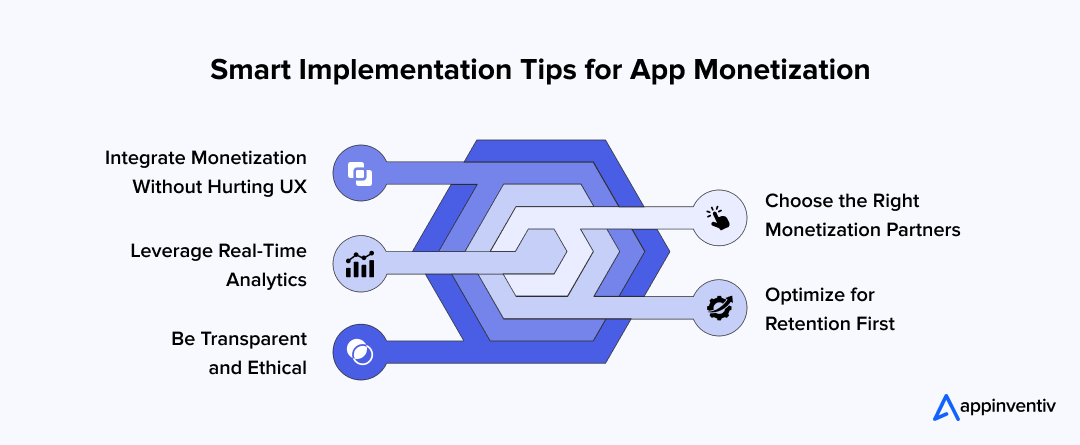
Integrate Monetization Without Hurting UX
Monetization should feel natural—not intrusive. Place ads thoughtfully (e.g., between content or after user actions), and ensure in-app purchases or paywalls are clearly explained and justified. Always maintain intuitive navigation and avoid interrupting core user flows with aggressive pop-ups or ads.
Choose the Right Monetization Partners
Whether it’s an ad network, payment gateway, or affiliate provider, your partners affect both revenue and user trust. Evaluate platforms based on payout rates, ad quality, SDK load, and compliance policies. Prioritize partners who align with your audience and enhance value, not just earnings.
Leverage Real-Time Analytics
Don’t set your monetization strategy and forget it. Use tools like Firebase, Mixpanel, or Amplitude to track user behavior, feature usage, and drop-off points. A/B test pricing tiers, ad placements, or upsell prompts to refine what works best—and pivot quickly based on user response.
Optimize for Retention First
A user that stays longer is more likely to convert. Focus on onboarding, habit loops, notifications, and feedback systems before pushing monetization. A great user experience leads to better reviews, more referrals, and stronger lifetime value—boosting every revenue metric downstream.
Be Transparent and Ethical
If you’re collecting data or offering in-app purchases, make permissions and pricing crystal clear. Respect privacy laws (like GDPR or CCPA) and get explicit consent for tracking. Transparency builds long-term trust—essential for apps using models like data monetization or affiliate links.
Emerging Monetization Trends That Will Dominate the Future
Monetization is no longer about picking between ads or subscriptions—it’s about building adaptive systems that respond to how users behave, what they’re willing to pay for, and how they consume value over time. As we look ahead, the most forward-thinking mobile app monetization strategies will be those that evolve continuously, fueled by real-time data, personalization, and AI.
Here are the most transformative trends shaping the future of app monetization.
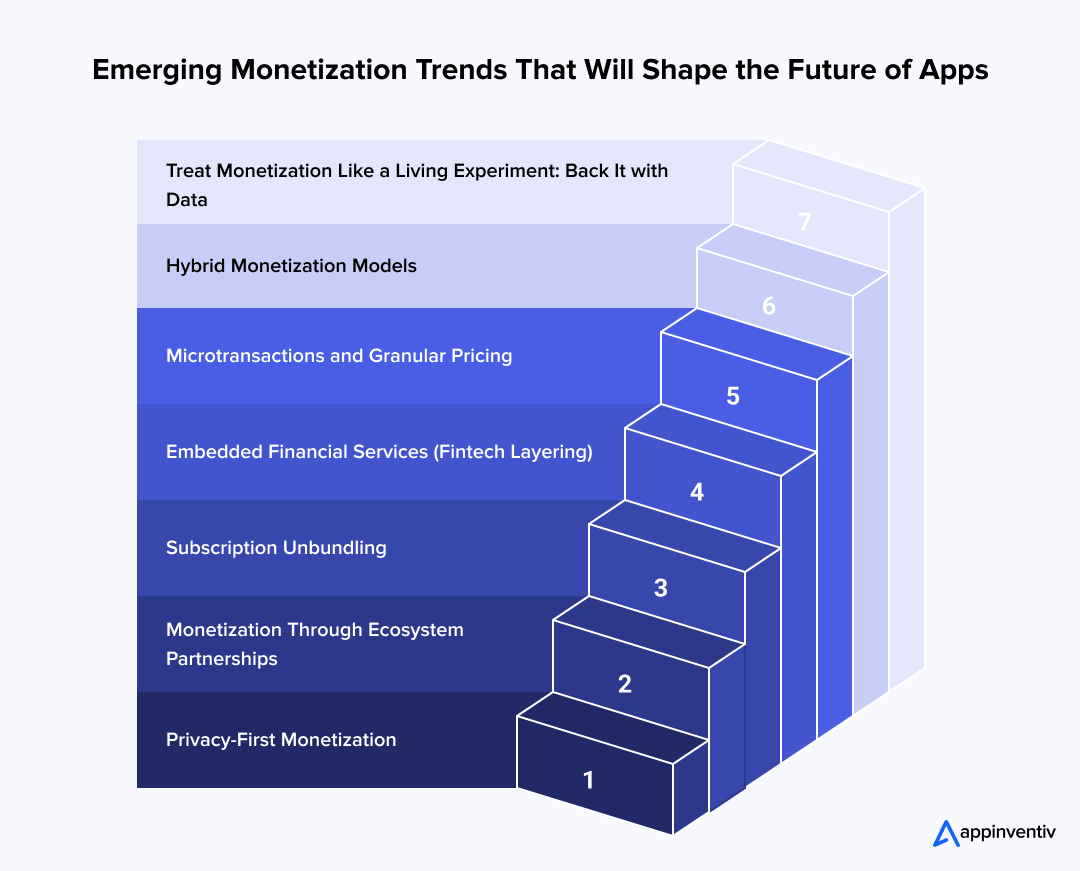
AI-Driven Personalization of Monetization Flows
Gone are the days of static pricing and generic upsells. The future belongs to AI-powered app monetization systems that learn from user behavior and tailor the monetization experience in real time. Whether it’s adjusting subscription pricing based on usage intensity, or serving dynamic in-app offers based on churn risk, AI enables context-aware monetization that boosts both ARPU and user satisfaction. Leading platforms are already using AI to A/B test ad formats, time premium prompts, and personalize paywalls—reducing friction while increasing conversion.
Hybrid Monetization Models
Enterprises are increasingly combining multiple app revenue models within a single app to balance reach and revenue. For example, a health app may offer a freemium model with gated premium workouts, use ads in non-core screens, and monetize long-term users through annual subscriptions. This hybrid approach not only diversifies income streams, but also allows product teams to experiment with what converts best—without alienating users. Understanding how to make money from an app now requires knowing how to design fluid, adaptable monetization architecture.
Microtransactions and Granular Pricing
As consumer tolerance for upfront payments declines, microtransactions are making a comeback. Whether it’s purchasing a single article, a new avatar, or one premium lesson, granular pricing unlocks value without commitment. Especially in emerging markets, this offers a way to monetize without losing price-sensitive users. Businesses investing in this mobile app business model must also integrate real-time analytics to understand transaction frequency, timing, and price elasticity by segment.
Embedded Financial Services (Fintech Layering)
For platforms that manage transactions—like marketplaces, booking apps, or productivity tools—embedding financial services such as credit, insurance, or instant payouts is becoming a massive monetization lever. These services not only add stickiness but open new streams of revenue through commissions or interest models. For instance, a freelancer marketplace offering early payout options can monetize through transaction fees or microloans. This represents a shift from pure utility to value chain monetization—an advanced evolution in app monetization strategies.
Subscription Unbundling
While subscriptions remain a dominant force in how mobile apps make money, we’re seeing a trend toward unbundling—where users can pay only for what they need. Instead of a $15/month full-feature access, users might be offered modular plans: $4 for analytics, $6 for templates, and $2 for cloud backup. This customization not only enhances perceived value but increases price acceptance. It’s a strategic response to rising subscription fatigue and growing demands for pricing flexibility.
Monetization Through Ecosystem Partnerships
As standalone monetization becomes harder in crowded categories, apps are exploring B2B monetization partnerships—for example, integrating their features into larger platforms via APIs or licensing content to third-party ecosystems. This allows businesses to make money from an app even without direct user monetization. For SaaS apps, developer tools, and content-rich platforms, this route offers scalable revenue while extending reach through new distribution channels.
Privacy-First Monetization
With increasing scrutiny around data use, privacy-first monetization is set to grow. Contextual advertising (vs. behavioral), on-device machine learning, and zero-party data strategies are helping apps stay compliant while still capturing value. The challenge lies in balancing personalization with transparency—but brands that do this well can win long-term trust while unlocking new forms of in-app advertising revenue that don’t rely on invasive tracking.
We can help you leverage the trends that actually fit your app, users, and business goals!
AI-Powered App Monetization: Turning Intelligence into Revenue
As mobile app markets get increasingly saturated, the impact of AI on app monetization is proving to be a critical differentiator—not just in product experience, but in how apps actually make money. For businesses looking to understand how do apps make money, future-proof their monetization models, AI offers a powerful path to optimize revenue with precision.
Unlike static monetization logic, AI-powered app monetization adapts in real time. It can analyze how users interact with different features, identify drop-off points, and forecast revenue behavior with surprising accuracy. More importantly, it enables dynamic personalization—tailoring offers, pricing, and promotions based on individual user signals.
Some practical use cases include:
- Using machine learning to predict which users are likely to churn—and offering them targeted discounts or content to retain them
- Optimizing ad placements and formats based on session patterns to boost in-app advertising revenue
- Applying AI-driven segmentation to create personalized upgrade prompts for freemium users
- Dynamically adjusting paywalls or subscription tiers to match user behavior and price sensitivity
As these models learn and improve, they not only drive higher ARPU (Average Revenue Per User), but also reduce friction in the monetization journey—making revenue generation feel like a seamless part of the user experience.
For businesses evaluating how to make money from an app in 2025 and beyond, AI isn’t just an enhancement—it’s becoming the foundation of modern mobile app monetization strategies.
How Can Appinventiv Help You With Mobile App Development?
We hope this blog helps you go beyond the basics of how do apps make money and give you a deeper understanding of what it truly takes to build scalable, revenue-generating digital products. From choosing the right mobile app business model to exploring AI-powered app monetization and emerging trends, monetization today is more strategic than ever—and far from a one-size-fits-all decision.
Whether you’re launching a new digital product or scaling an existing app, aligning your monetization model with user needs, market expectations, and technology capabilities is essential. It’s not just about adding features—it’s about engineering value capture into every stage of the user journey.
That’s where Appinventiv comes in.
As a full-stack mobile app development service provider, we work with startups, enterprises, and global brands to build high-performing, user-first applications with monetization baked into the product architecture. From concept to code and design to deployment, we bring the tech expertise, domain insight, and execution speed that modern businesses demand.
We can help you:
- Understand how does an app make money
- Select and implement the right app monetization platforms
- Integrate AI-driven personalization and pricing engines
- Optimize user flows to increase conversion and app development ROI
- Build cross-platform apps that scale across markets and devices
- Continuously evolve your product with data-backed iterations
If you’re ready to move beyond assumptions and build an app that doesn’t just work—but earns, partner with us to make that happen.
FAQs
Q. How much money can you make from an app?
A. There’s no fixed number—how much money you can make from an app depends on your monetization model, user base, geography, and retention rates. Let us offer you an app monetization example. For instance, subscription-based apps in health, education, and productivity categories often earn $1–$10+ per user/month, while ad-supported apps may earn less but scale with volume. The most profitable apps combine data-driven monetization strategies with continuous product optimization to increase ARPU (Average Revenue Per User) and LTV (Lifetime Value).
Q. How to generate revenue from apps?
A. To generate revenue from apps, you must align your monetization strategy with your app’s core value proposition and user behavior. Common mobile app monetization strategies include:
- In-app advertising revenue through banner, native, or rewarded ads
- In-app purchases for virtual goods, content, or features
- Subscription-based models offering tiered or recurring billing
- Commission or transaction fees (for marketplaces or booking apps)
- Freemium upgrades from a free basic app to premium features
- Licensing, white-labeling, or API-based monetization
Q. How to create an app and make money?
A. Start with a validated app idea, identify your audience, define your mobile app business model, then build with monetization integrated from day one.
- Choose the right platform (iOS, Android, or both)
- Select a scalable app revenue model
- Integrate analytics to optimize monetization flows
- Test and improve based on user behavior
Q. What are the most profitable ways for mobile apps to generate revenue in 2025?
A. In 2025, the most profitable ways mobile apps make money include:
- AI-powered app monetization with dynamic pricing and personalized offers
- Hybrid monetization models (ads + subscriptions + microtransactions)
- Vertical SaaS with enterprise subscriptions
- Fintech integrations (insurance, credit, payouts) inside transactional apps
- High-retention content ecosystems with tiered memberships
Q. What is the most profitable app monetization strategy?
A. The most profitable app monetization strategy depends on your category and audience, but subscriptions remain the highest-earning model globally—especially for SaaS, education, wellness, and content apps. However, AI-enhanced hybrid models that combine ads, purchases, and personalized offers are increasingly outperforming single-method strategies.
Q. What are the legal and compliance challenges in enterprise app monetization?
A. Enterprise-grade app monetization requires strict adherence to legal and regulatory frameworks. Key challenges include:
- Data privacy compliance (GDPR, CCPA, HIPAA)
- Payment gateway regulations and financial reporting standards
- In-app billing guidelines by Apple and Google
- Cross-border tax implications for global apps
- Ad policy compliance with third-party networks and DSPs
Failing to address these can result in store rejection, penalties, or legal action.
Q. How can AI/ML optimize monetization paths in enterprise-grade apps?
A. AI-powered app monetization uses machine learning to personalize pricing, predict churn, and optimize when and how users are presented with offers or upsells. Key capabilities include:
- User segmentation based on intent, LTV, and conversion probability
- Real-time personalization of paywalls, discounts, and ad formats
- Predictive analytics for lifetime value and retention
- Dynamic content placement to improve engagement and revenue
- These models help increase both app development ROI and long-term revenue efficiency.
Q. Can an app make money without in-app purchases?
A. Yes, an app can absolutely make money without relying on in-app purchases. Alternative mobile app monetization strategies such as in-app advertising, subscription billing, and affiliate marketing have proven to be highly effective, especially for apps with large or engaged user bases. Ad-supported models generate in-app advertising revenue based on impressions and clicks, while subscriptions offer predictable, recurring income for delivering ongoing value.
In addition, apps can monetize through commission-based models (like marketplaces), referral partnerships, or even data monetization—provided it’s handled ethically and in compliance with privacy regulations. The key to success lies in aligning the app revenue model with how users perceive and consume value, not just how they pay for it.
So when asking “How do apps make money?”—the better question might be: how does your app deliver value worth paying for?


- In just 2 mins you will get a response
- Your idea is 100% protected by our Non Disclosure Agreement.
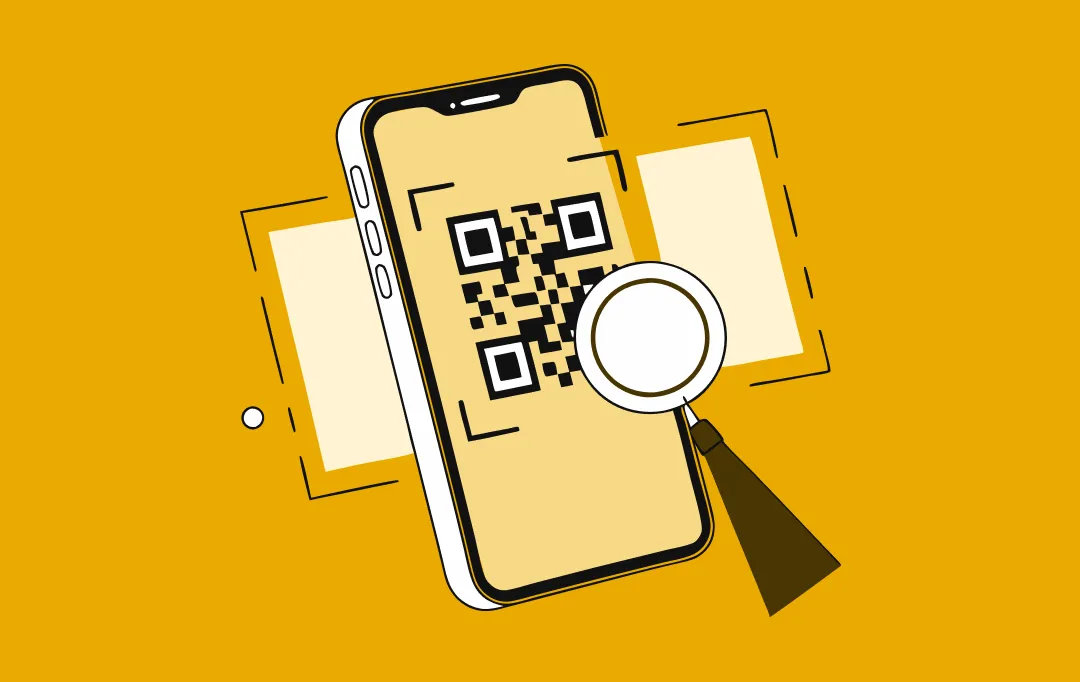
How To Build A Product Scanner App Like Yuka – Explore Features, Cost, Case Studies
Key takeaways: A basic Yuka-style product scanner costs between $40,000 and $80,000, while advanced builds with AI and large databases can reach $400,000 or more. The real work is not scanning barcodes, but managing accurate ingredient data, scoring logic, and compliance with FDA and CCPA rules in the US. Successful apps begin with core features…

How Much Does It Cost to Build a Ticket Booking App like Ticketmaster?
Key takeaways: You'll need anywhere from $40,000 for a basic MVP to over $400,000 for an enterprise-grade solution if you're looking to build an app like Ticketmaster. Want interactive seat maps? Maybe AI recommendations? These features are great, but they'll definitely push your costs up. Here's where you can save some money. Asian developers charge…
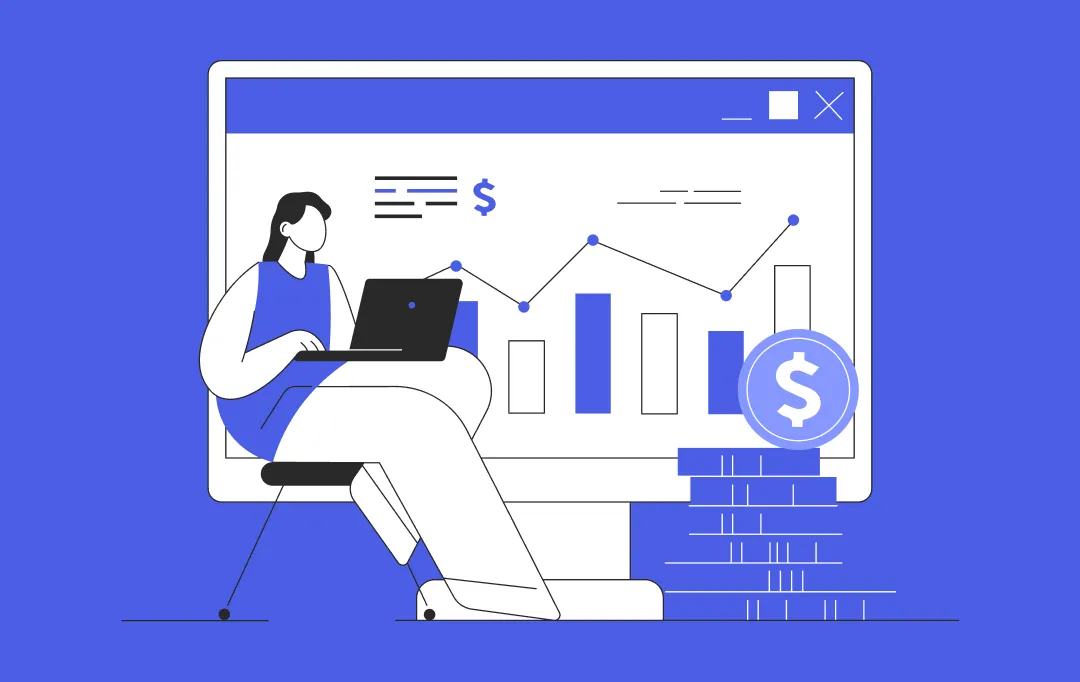
Unlocking the Cost of Building a Community Platform Like Qatar Living: What to Expect
Key takeaways: Building a community platform is a business decision first and a technology project second. A strong MVP in Qatar typically starts around QAR 109,200–QAR 254,800, while full-scale platforms move into the QAR 2,184,000+ range based on scale and ambition. Success comes from solving daily user problems, not from copying features. Cost is driven…








